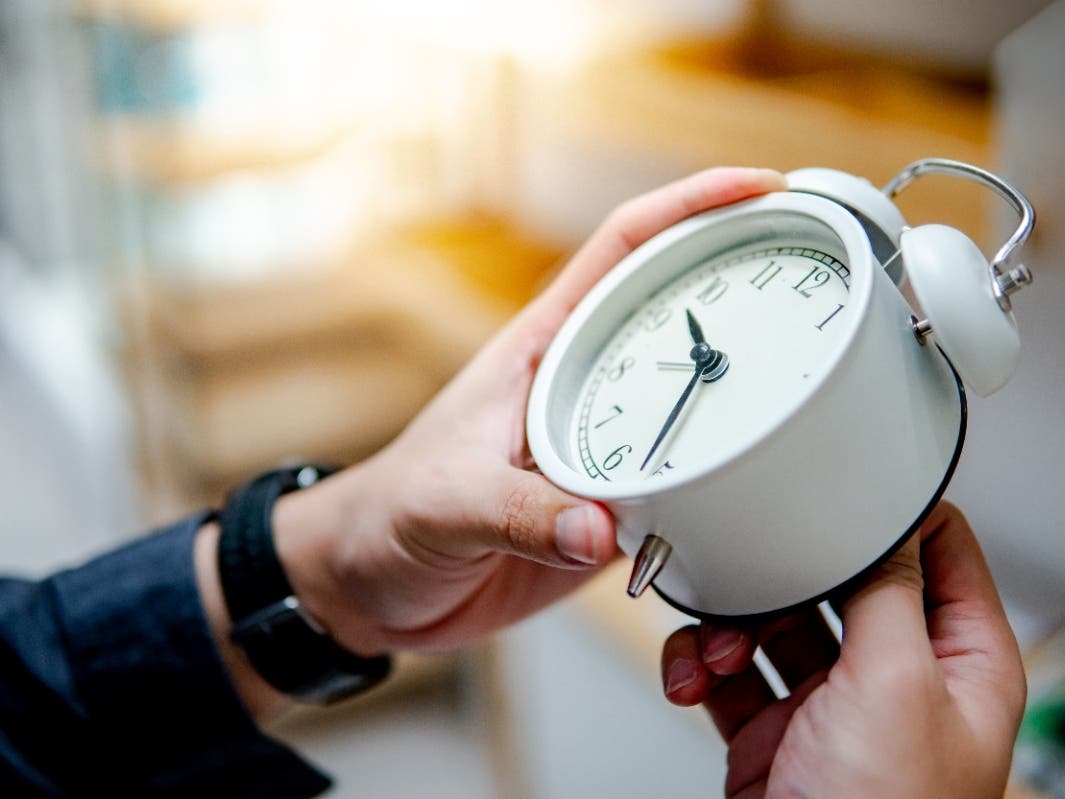Community Corner
Daylight Saving Time: When Clocks Change In 2021
Daylight saving time — colloquially known as "daylight savings" — begins on the second Sunday in March.

ACROSS AMERICA — Longer days are just around the corner as U.S. states prepare to spring forward, officially marking the start of daylight saving time.
Daylight saving time begins at 2 a.m. March 14. You don’t have to do much to prepare — just remember to set your clocks ahead by one hour before going to bed Saturday night.
Daylight saving time starts each year on the second Sunday in March. The practice involves moving clocks forward one hour from standard time during the summer months and changing them back again in the fall. This year, daylight saving time ends on Nov. 7.
Find out what's happening in Across Americawith free, real-time updates from Patch.
The basic point of daylight saving time is for us to make better use of natural daylight; however, not every state observes it. Hawaii doesn't, nor do the U.S. territories of Puerto Rico, Guam, American Samoa, and the U.S. Virgin Islands.
The time switch also passes without notice in Arizona, except in the Navajo Nation, which takes part in the biannual clock change to and from daylight saving time.
Find out what's happening in Across Americawith free, real-time updates from Patch.
Arizona cited its hot climate in getting an exception; and Hawaii cited its tropical latitude, which means there isn't much variation in daylight in the summer and winter months.
Nearly every U.S. state has introduced legislation that would make standard or daylight saving time permanent, according to the National Conference of State Legislatures. Since 2015, at least 350 bills and resolutions have been introduced.
In 2018, Florida became the first state to enact legislation to permanently observe daylight saving time should federal law permit it.
That, however, is the catch.
Federal law allows a state to exempt itself from observing daylight saving time, but does not allow the permanent observance of daylight saving time. Congress would have to pass a new federal law before any state legislation calling for that could go into effect.
Daylight saving time has been around since World War I. But it became the law of the land more than 50 years ago with the Uniform Time Act of 1966, though the exact dates — now the second Sunday in March and the first Sunday in November — have changed some over the years.
So who really benefits from the time change?
Proponents may argue that longer evenings motivate people to get out of the house. The extra hour of daylight can be used for outdoor recreation such as golf, soccer, baseball, running and more. It also benefits the tourism industry.
However, critics say the drawbacks outweigh the benefits. The time change can mess with our body clocks and circadian rhythms, making for some restless nights and sleepy days. It also is difficult to quantify the economic cost of the collective tiredness caused by daylight saving time, but studies have found a decrease in productivity after the spring transition.
Tips To Help Adjust
So, what are the best ways to avoid sleep deprivation? The U.S. Centers for Disease Control and Prevention says this already affects about one-third of adults in the United States. Here are some tips:
- You know it's coming. Go to bed an hour early Saturday, and make sure you get seven to eight hours of sleep.
- Get the kids to bed early, too. They pay more attention to their internal clocks than timepieces, so implement the routine Saturday night to help them adjust to the brighter-than-usual bedtime, so they'll be set up for a good night's sleep before school Monday.
- Be patient with the kids. They may throw temper tantrums or show signs of frustration, but it's usually short-lived. Adults can also be cranky during the first several days after the time switch. You'll get over it, too.
- New baby? Pretend nothing has changed. That means taking the baby outside, even if it's cold, to help the baby's internal clock adjust. Getting 30 minutes of sunlight first thing in the morning will help you, too.
- Limit your vices. That shot of booze may seem like a good idea, but it will fragment your sleep. And, of course, limit your caffeine intake in the late afternoon and evening. Chamomile tea or a glass of warm milk is a better choice.
- Don't eat a big meal right before bedtime, either.
- If you are using the extra hour of daylight at the end of the day for exercise, make sure your session ends at least three hours before bedtime, because the energy boost that exercise gives you can cause insomnia.
- Wind down with a relaxing activity, such as a warm bath or shower, gentle stretching, or yoga.
- Let the sun shine in. Experts say that pulling back the curtains and allowing the sun to shine in the windows in the morning improves alertness during the day. You're also more likely to feel sleepy when it is time to go to bed.
- Turn off the bright lights an hour or two before you go to bed — yes, even the television, your computer and other electronic devices. Read a relaxing book or listen to soothing music instead.
- Don't give in to the urge for a long nap. Take a brief power nap if you need, but longer naps will disrupt your sleep schedule and make it more difficult to adjust to daylight saving time.
- Make your bedroom a sleep sanctuary — dark, quiet, well ventilated and at a slightly cooler temperature.
Get more local news delivered straight to your inbox. Sign up for free Patch newsletters and alerts.